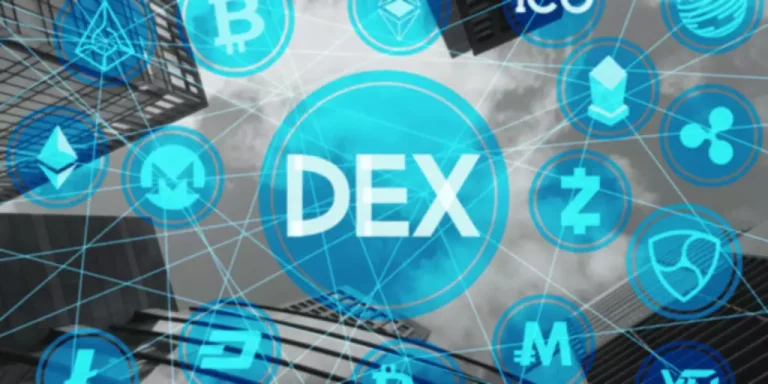Content
Projects list their tokens on a DEX, and investors can purchase them directly. The evolution Digital asset continued with the emergence of token sales on decentralized exchanges (DEXs), known as Initial DEX Offerings (IDOs), providing immediate liquidity, immediate trading, and lower costs for listing. The rapid advancements in blockchain and crypto have led to massive transformations in the ways business owners raise funds for their new tokens today.
Financial Advantages of Initial DEX Offering
An initial DEX offering boasts numerous distinct benefits when contrasted initial dex offering development company with initial exchange offerings (IEO) and initial coin offerings (ICO). An initial DEX offering has many clear advantages compared to initial exchange offerings (IEO) and initial coin offerings (ICO). If a project is launching an IDO, it means the project is launching a coin or token via a decentralized liquidity exchange. This is a type of crypto asset exchange that depends on liquidity pools where traders can swap tokens, including crypto coins and stablecoins. An Initial DEX Offering (IDO) is a preferred method in crypto, offering tokens on a Decentralized Exchange (DEX).
The Role of Initial DEX Offering in the Future of Cryptocurrency
As per the changes, the Jamz project https://www.xcritical.com/ agreed to launch 300,000 JMZ (native tokens) in the market. Also, they released their whitepaper detailing the application of this blockchain product. An initial dex offering (IDX) is an alternative to an initial coin offering (ICO). Compared to IEOs and ICOs, which involve an initial waiting period, IDOs provide immediate access to liquidity and trading.
Strategic Benefits of Initial DEX Offering
I have been actively involved in the cryptocurrency industry for several years and have witnessed the evolution of fundraising methods firsthand. The rise of Initial DEX Offering has been particularly exciting, as it introduces a level playing field for both projects and investors. During the IDO launch, the project’s tokens are made available for public purchase on a decentralized exchange. Investors can participate by using compatible wallets and purchasing tokens with the native currency of the DEX.

Consequently, ICOs cast a shadow on the crypto industry, dissuading potential investors. Initial DEX Offering is a decentralized fundraising method that allows cryptocurrency projects to raise funds directly from the public through decentralized exchanges (DEXs). IDOs have become a significant fundraising avenue in the cryptocurrency domain, offering a decentralized, efficient, and accessible method for projects to secure capital. While IDOs present certain risks and challenges, their benefits, including immediate liquidity, reduced costs, and enhanced security, make them a compelling choice for projects and investors. As the crypto ecosystem continues to evolve, IDOs are expected to play a crucial role in shaping the future of decentralized finance and blockchain technology.
- In this article, we will unravel the mechanics of IDOs, explore their advantages and pitfalls, and highlight some standout IDOs for 2024.
- This comprehensive guide explores the meaning, benefits, and best practices of locked liquidity, offering insights for developers and investors alike.
- Understanding the principle of DEX offering is possible once a DEX concept is clear.
- This approach democratizes funding, enabling anyone in the crypto community to contribute, thereby fostering a diverse and supportive community from an early stage.
- If the project sounds appealing, investors get interested in it and buy tokens within the pre-IDO round before they become available on the DEX.
IDOs are a new and exciting type of decentralized and permissionless crowdfunding platform that allows projects to launch their native token or coin through a decentralized exchange (DEX). Unlike ICOs, IDOs are more secure and transparent, as they are based on blockchain technology and do not require centralized intermediaries. The first IDO launched in June 2019 by Raven Protocol, marking a pivotal shift in decentralized fundraising and investment capital.
A token generation event (TGE) is a powerful tool for blockchain projects to raise funds, distribute tokens, and build communities. This guide explores TGEs in detail, covering their purpose, how to launch them, best practices, and insights for participants. Learn how TGEs transform blockchain fundraising and how Token Tool simplifies the process for creators and investors alike. Imagine you’re attending a startup fair, where founders showcase their ideas and projects. One of the projects presented is innovative and has prospects to make an impact, but it needs funding to bring it to life.

Simply because using DeFi platforms is a learning curve, which may be a barrier to the average crypto trader. Another improvement would be to boost awareness and education of DeFi as this industry grows. Overall, each method has its own advantages and disadvantages, and it’s up to the project team to decide which one suits their needs best.
The DEX is also responsible for creating and running smart contracts and handling funds. During the IDO, the smart contract handles the allocation and distribution of tokens based on their contributions. It collects funds, usually in the form of a base currency such as Ethereum (ETH), and automatically calculates the corresponding token amounts based on the predetermined price or exchange rate. In the crypto world, an IDO represents a streamlined and democratized approach to raising capital. It allows projects to reach a broad audience quickly and efficiently while leveraging the liquidity and decentralized nature of DEXs.
Unlike traditional models, investors do not face prolonged waiting periods for listing their desired tokens on an exchange. Typically, listings occur immediately after the completion of the IDO, enabling investors to capitalize on their investments more swiftly than in Initial Coin Offerings (ICOs). The complexity of DeFi platforms poses a challenge for potential investors with limited knowledge of cryptocurrency operations, acting as a barrier to entry for the average crypto trader. Saakuru, launched on PancakeSwap, focuses on DeFi solutions for emerging markets.
This subsidiary of Binance gives access to over 10 million users to IDO projects. IDO creators also need to go through checks to get access to the platforms’ user base. The amount of money attracted from ICOs depends on how well the marketing campaign was organized and how many investors were engaged. Instead of launching an extensive marketing campaign and organizing all the technicalities, IDO organizers can see their coin starting to trade on the very first day of the project’s launch on the DEX. If the DEX has a large liquidity pool and numerous users, the coin’s value may quickly increase as a result of traders’ wish to gain profit from its popularity. Getting involved with the project’s community and following their social media channels is a good way to start.
It is crucial for projects to conduct thorough market research and risk analysis to anticipate potential challenges and devise effective strategies to address them. It enjoys the reputation of a revolutionary launchpad solving the flaws of previous launchpads, mainly in terms of user staking, security, and IDO process organization. An exchange which does not require users to deposit funds to start trading and does not hold the funds for …
This further solidifies the importance of transparency and non-custodial trading for both projects and investors respectively. Unlike IEOs and ICOs, which entail an initial waiting period, IDOs offer instant access to liquidity and trading. Rather than relying on an exchange to approve a project, it’s the vocal community members who evaluate projects and tokens. This approach creates opportunities for smaller projects and extensive collaborations.
AML and KYC are now standard for centralized exchanges, and DEXs may also be subject to the same rules in the future. Some of the funds raised are used to create a liquidity pool with the project’s token. Notably, though, because token pricing on Uniswap works with a bonding curve rather than order books, the UMA token price quickly ramped up as investors lined up to purchase the token. As a result, traders attempted to get ahead of others by paying higher gas costs, which, ultimately, led to UMA’s token price jumping more than $2 minutes after the launch.
It’s much easier for an unreputable project to distribute their token through an IDO than it is through an IEO with a large, regulated exchange. At the TGE, the tokens are transferred to the user, and the LP opens for trading. You might have to complete marketing tasks to join the list or simply provide your wallet address. Let us look at some examples of initial DEX offerings to comprehend the concept better. Embarking on an Initial DEX Offering (IDO) journey can be a thrilling yet challenging endeavor, as it involves navigating through a complex web of risks that could potentially impact the success of the project.